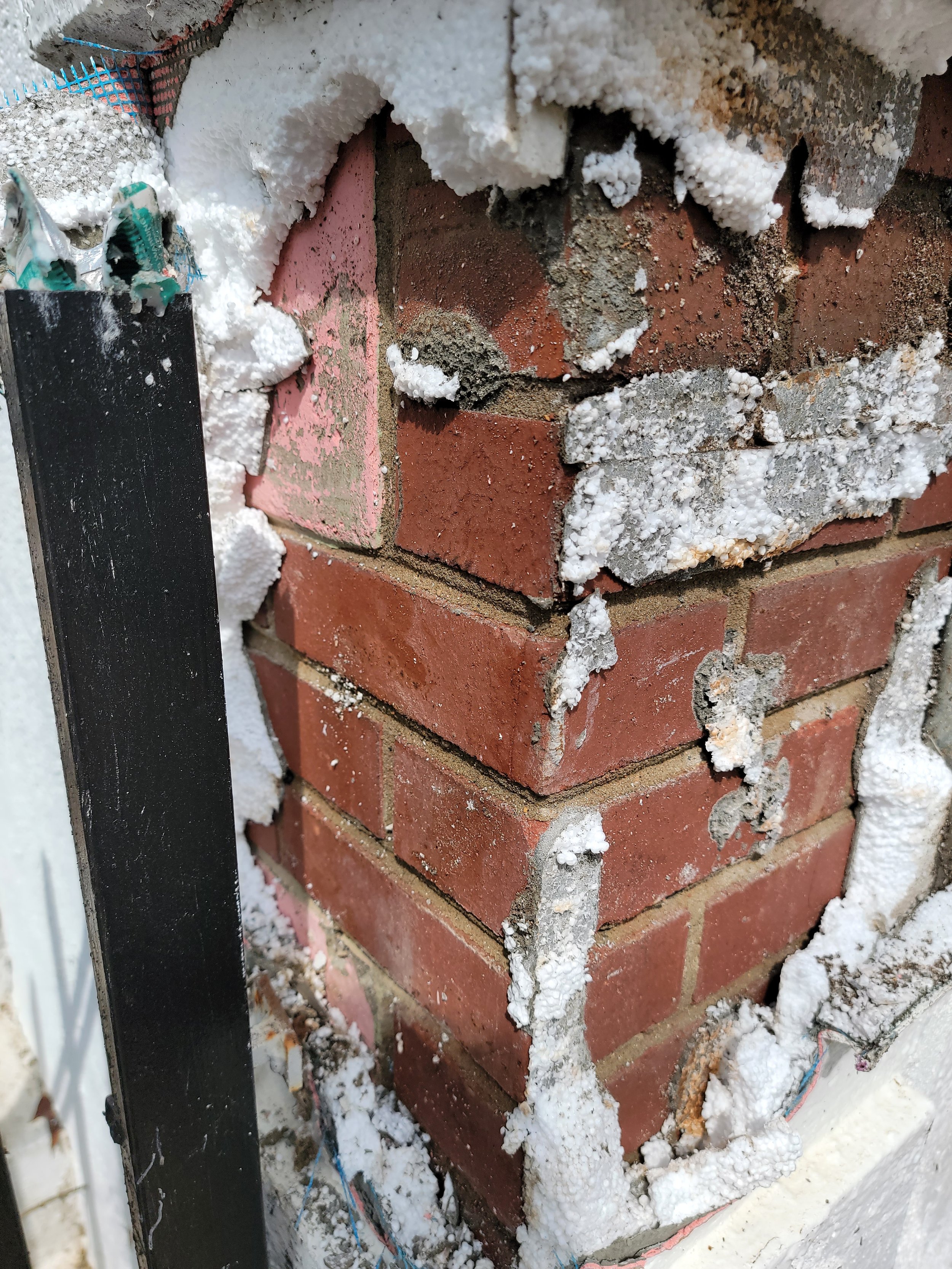McDaniel Street
In partnership with the Atlanta Preservation Center (APC), Landmark Preservation Consulting, LLC (LPC) was commissioned by The City of Atlanta to conduct a conditions assessment for 1029 McDaniel Street, located in Atlanta’s historic Pittsburgh neighborhood. Built in 1945, the CMU block building has served its community as a corner store for the majority of its history, however the building has undergone numerous alterations. LPC’s assessment focused on identifying building deficiencies, determining what historic fabric remained, and providing recommendations for the building’s rehabilitation. The only remaining historic material on the building’s interior were black and red checkered asbestos tiles under the current flooring, a ceramic sink in the small employee restroom, and wood flooring on the second floor. Through investigative removals, it was uncovered that the historic brick façade was still intact beneath modern EIFS, and that the brick was quoined at the north and south corners with the CMU of the north and south elevations.
LPC examined a multitude of archival and online resources to uncover and compile an architectural and public history for 1029 McDaniel Street to be included in the assessment. The building was in its prime during the 1950s and 60s when it was home to the prominent Atlanta pharmacy, the Yates and Milton Drugstore on the ground level. By 1955, Yates and Milton had relocated their fourth store in the city to 1029 McDaniel Street. In 1960, Dr. Roy C. Bell’s office, a notable Atlanta dentist and Civil Right activist, was located on the second floor of the building. In 1962, Dr. Bell sued Grady Memorial Hospital in a federal case to integrate the hospital. This federal case led to the integration not only of Grady Memorial but hospitals throughout the United States. Two years later, Dr. Bell filed a lawsuit against the discriminatory practices of the Georgia Dental Association, which led to the desegregation of the organization and eventually the American Dental Association. Through community engagement, the City of Atlanta determined that the building should be rehabilitated for community use and the design should be sympathetic to its meaningful mid-century history.














